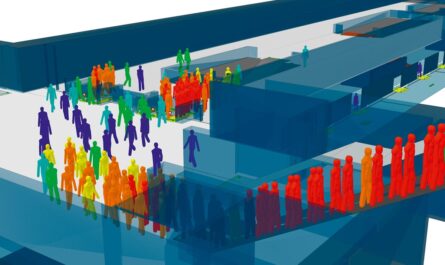Programmable silicon is set to revolutionize computing as we know it. From field programmable gate arrays (FPGAs) to complex programmable logic devices (CPLDs), programmable chips offer unprecedented flexibility and customization compared to traditional fixed-function processors. In this article, we will explore the technology behind programmable silicon, various types of programmable devices, and their potential to transform industries and solve difficult problems.
What is Programmable Silicon?
An integrated circuit designed to be configured by a customer or a designer after manufacturing is known as programmable silicon. Unlike application-specific integrated circuits (ASICs) which are customized for a single application, programmable silicon chips can be adapted for various uses by downloading different configurations or programs onto the chip. This is made possible through the inclusion of programmable logic blocks and interconnects that can be wired together in different patterns to implement any desired logic function.
The basic building blocks of Programmable Silicon are lookup tables (LUTs), flip-flops, and programmable interconnects. LUTs allow implementing any logic function of a few inputs by configuring a block of SRAM to act as a truth table. Flip-flops store state and serve as registers. Interconnects can be programmed to route signals between logic blocks as needed. By combining these basic elements, a programmable chip can implement essentially any digital circuit desired by the end user.
Types of Programmable Silicon Devices
The two main categories of programmable silicon devices are FPGAs and CPLDs.
Field Programmable Gate Arrays (FPGAs): FPGAs are the largest and most complex programmable devices, consisting of large arrays of configurable logic blocks and programmable routing channels. Modern high-end FPGAs contain billions of transistors, thousands of configurable logic blocks, dedicated memory blocks, DSP slices, and high-speed transceivers on a single die. Their architecture and huge logic capacity make FPGAs suitable for implementing complex systems involving both hardware and software.
Complex Programmable Logic Devices (CPLDs): CPLDs are less complex than FPGAs, with a smaller number of logic blocks and a simpler configuration. They excel in applications requiring fewer logic resources than FPGAs but still benefit from in-system programmability. CPLDs are commonly used for simple glue logic, interface connectivity, protocol conversion, and other applications with modest logic demands.
Within these categories exist further options – low-cost programmable devices for simple tasks, high-performance variants for processing-intensive workloads, radiation-hardened versions for space applications, and more. Programmable chips also differ in architecture, configuration technology, and manufacturing process depending on their intended role.
Applications of Programmable Silicon
The programmability and versatility of FPGAs and CPLDs have enabled their use across diverse applications that were previously not possible or economically viable:
Image/Signal Processing: FPGAs are commonly employed for real-time image, video, radar and communications signal processing in applications like machine vision, satellite payloads, and avionics. Their parallel architecture makes them ideal for these workloads.
Hardware Acceleration: With their ability to implement custom circuits and processors, FPGAs are increasingly being used to accelerate AI/ML, data analytics and other compute-intensive workloads alongside CPUs and GPUs in datacenters and the cloud.
Prototyping and Emulation: Programmable logic allows designing, verifying and testing prototype systems faster than traditional methods. FPGAs are extensively used for ASIC prototyping, hardware/software co-verification and emulation.
Embedded Systems: CPLDs and low-cost FPGAs feature heavily in automation, industrial IoT, telecom and various embedded systems products due to their small size, low power and reprogrammability.
Military and Aerospace: Harsh environment FPGAs play a critical role in defense electronics, satellites, radar systems and avionics on account of their resilience and reliability.
The flexibility of programmable silicon has opened up new application domains that were previously infeasible or not cost-effective. This versatility will be instrumental in tackling more complex challenges across industries going forward.
Future Outlook
Programmable silicon is poised to grow more indispensable as electronics become ever more pervasive. Some of the key trends include:
Heterogeneous Integration: Future SoCs will combine programmable processors with FPGAs, ASICs, memory and I/O on a single interposer for superior performance and efficiency.
Processor-as-a-Programmable-Device: CPUs/GPUs with configurable logic will provide greater hardware customization without requiring separate FPGAs/CPLDs.
In-Memory and Near-Memory Computing: FPGAs/CPLDs will move closer to memory in 3D stacks to enable applications like in-memory analytics with lower power and latency.
AI Hardware Specialization: More sophisticated AI/ML acceleration on FPGAs will open new application vistas in autonomous vehicles, robotics, healthcare and more.
Industrial Metawareness: Programmable edge devices coupled with analytics will drive predictive maintenance, process optimization and advanced manufacturing techniques.
Programmable silicon technologies like FPGAs constitute a general-purpose computing paradigm akin to CPUs/GPUs but with greater hardware customization. Their defining programmability makes them perfectly poised to navigate the rapidly evolving requirements of new workloads and applications across industries. FPGAs are key enablers for the next generation of intelligent and adaptive embedded systems.
*Note:
1. Source: Coherent Market Insights, Public sources, Desk research
2. We have leveraged AI tools to mine information and compile it.


